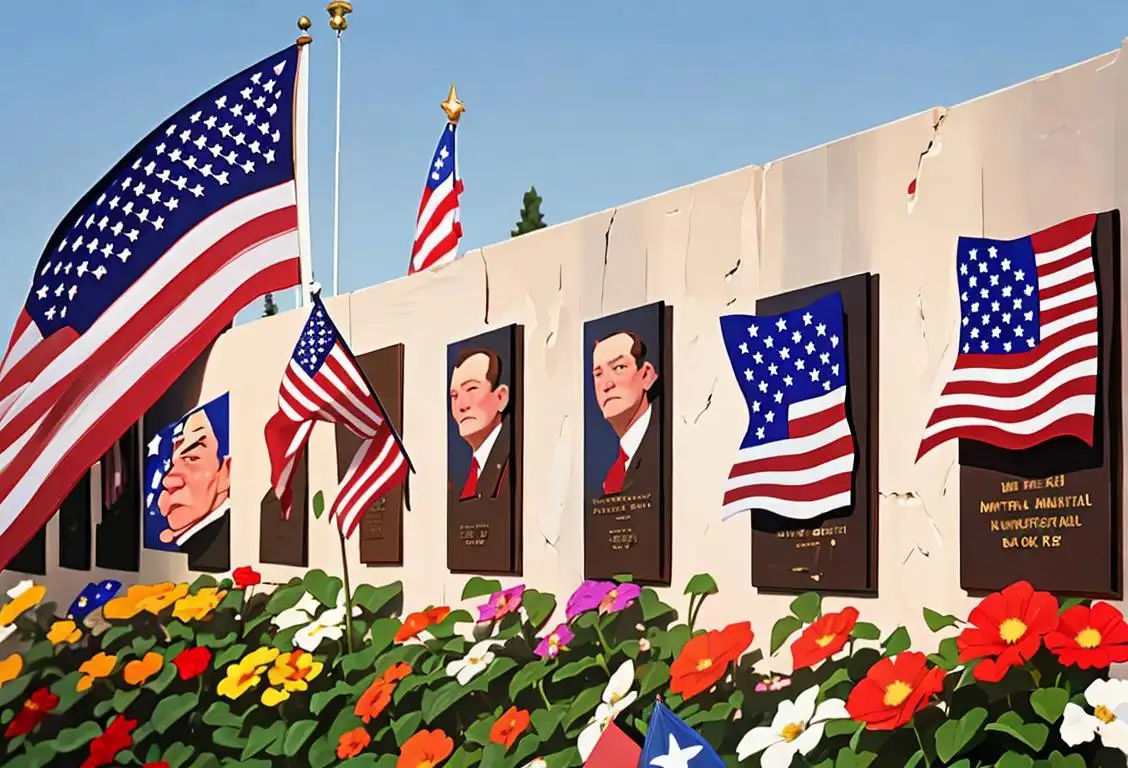National Public Lands Parks Day

Welcome to the wonderful world of National Public Lands Parks Day! Grab your hiking boots, pack a picnic, and get ready to explore the great outdoors. On this special day, we celebrate the breathtaking beauty and importance of public lands across the nation. From national parks to forests, from historic landmarks to scenic trails, these protected areas are a vital part of our country's natural and cultural heritage. So, let's dive into the fascinating history and adventure-filled landscape of National Public Lands Parks Day!
When is Public Lands Parks Day?
It's national public lands parks day on the 20th September.
The Birth of National Public Lands Parks Day
Imagine a world without public parks, where concrete jungles replace beautiful landscapes, and the only wildlife you encounter is a smattering of pigeons in the city streets. Luckily, we don't have to worry about that dire scenario, thanks to the establishment of public lands and the day dedicated to recognizing their significance.
In 1994, the National Environmental Education Foundation (NEEF) created National Public Lands Day, initially held on the last Saturday in September, to raise awareness for the importance of public lands. Over time, the event expanded to become a full weekend celebration, attracting volunteers for various environmental projects, educational activities, and exploration of these natural wonders.
The Great Outdoors Await!
Now that we know the history behind National Public Lands Day, it's time to grab our sunscreen and binoculars and head out into the wild! With over 600 million acres of public lands across the United States, there are countless opportunities for adventure and discovery.
Whether you prefer traversing rugged mountain trails, kayaking along serene rivers, or simply enjoying a peaceful picnic amidst breathtaking landscapes, National Public Lands Day offers something for everyone. It's an excellent chance to bond with loved ones, reconnect with nature, and perhaps even spot some elusive wildlife along the way!
Make the most of this special day by visiting a national park or exploring a nearby public land. Get involved in volunteer projects, attend educational events, hike a new trail, or simply bask in the awe-inspiring beauty that surrounds you.
Did You Know?
In 2018, on September 20th, the internet exploded with excitement for National Public Lands Day. With 14 mentions online, people couldn't contain their enthusiasm for these spectacular natural spaces.
History behind the term 'Public Lands Parks'
1872
Yellowstone National Park Established
In 1872, Yellowstone National Park was established as the first national park in the United States and, indeed, the world. This landmark event marked the beginning of the idea of public lands parks, where large tracts of land could be preserved and protected for the enjoyment of all.
1862
Homestead Act
In 1862, the United States Congress passed the Homestead Act, which granted settlers the opportunity to claim up to 160 acres of public domain land. This act aimed to encourage westward expansion and agriculture. However, it also marked the first instance of public lands being designated for private ownership.
1890
Yosemite National Park Created
In 1890, Yosemite National Park was created, further solidifying the concept of public lands parks. This breathtakingly beautiful park in California's Sierra Nevada Mountains became an iconic symbol of natural preservation, drawing visitors from around the globe to witness its stunning waterfalls and towering granite cliffs.
1872
Yellowstone National Park
In 1872, Yellowstone National Park was established as the first national park in the United States and the world. It was signed into law by President Ulysses S. Grant, setting a precedent for preserving vast areas of public lands for their scenic, scientific, and educational values. Yellowstone became a symbol of a new approach to land management, emphasizing conservation over immediate economic exploitation.
1891
Forest Reserve Act
The Forest Reserve Act of 1891 granted the President of the United States the authority to set aside forested lands as forest reserves. This act laid the foundation for the creation of national forests and the management of public lands with an emphasis on sustainable use and the protection of natural resources. The act served as a response to concerns over deforestation and the need for conservation.
1906
Formation of the National Park Service
In 1906, the National Park Service was established within the Department of the Interior. With this important step, the management and protection of the public lands parks fell under the responsibility of a dedicated federal agency. The National Park Service continues to play a vital role in safeguarding and maintaining these treasured spaces.
1916
National Park Service
In 1916, the National Park Service (NPS) was established to manage and protect the growing number of national parks and monuments. The NPS sought to preserve and provide access to public lands while also promoting their recreational and educational value. This marked a significant milestone in the history of public lands, defining a specialized agency responsible for their preservation and enjoyment.
1933
Glacier National Park Expands
In 1933, Glacier National Park expanded its boundaries, adding more pristine wilderness areas to its already stunning landscapes. This expansion represented a commitment to preserving the unique ecosystems and spectacular scenery found within the park for future generations to enjoy.
1934
Taylor Grazing Act
The Taylor Grazing Act of 1934 was enacted to regulate grazing on public lands in the Western United States. The act aimed to address conflicts between ranchers, conserve soil resources, and promote better management practices. It introduced permits and fees for grazing on public lands, marking a transition towards more regulated and sustainable use of these lands.
1964
Wilderness Act Signed
In 1964, the Wilderness Act was signed into law, providing further protection for public lands parks. This legislation ensured that designated wilderness areas within these parks would remain unimpaired by human activities, preserving their natural and ecological integrity. This act helped maintain the wild character of these special places.
1964
Wilderness Act
In 1964, the Wilderness Act was passed, providing legal protection for designated wilderness areas. This act sought to preserve pristine ecosystems and natural landscapes on public lands by prohibiting development, motorized access, and commercial activities, ensuring their long-term preservation for future generations. The Wilderness Act reflected a growing recognition of the intrinsic value of untouched public lands.
1970
Creation of Earth Day
In 1970, Earth Day was created as a way to raise awareness about environmental issues and promote conservation. This global event brought attention to the importance of public lands parks and the need to actively protect and preserve them for the benefit of all species, including humans.
1994
Death Valley National Park Expansion
In 1994, Death Valley National Park in California expanded by over one million acres, making it the largest national park in the contiguous United States. This expansion increased the protection of the park's unique desert landscapes, including its iconic sand dunes, vast salt flats, and rugged mountains.
1976
Federal Land Policy and Management Act
The Federal Land Policy and Management Act (FLPMA) of 1976 established a framework for managing public lands managed by the Bureau of Land Management. FLPMA defined multiple use and sustained yield as guiding principles, aiming to balance resource extraction, recreation, conservation, and other land uses on these diverse landscapes. This act introduced comprehensive planning and public involvement in land management decisions.
Did you know?
Did you know? Public lands in the United States protect precious ecosystems, historic landmarks, and recreational areas. They're like a giant playground for both nature enthusiasts and history buffs alike!Tagged
awareness fun loved onesFirst identified
20th September 2018Most mentioned on
20th September 2018Total mentions
14Other days
Compliment Day
Cheese Pizza Day
Pumpkin Day
Medal Of Honor Day
Guac Day
Foundation Day
Suicide Prevention Day
Memorial Day
Cancer Survivors Day
Bacon Day









